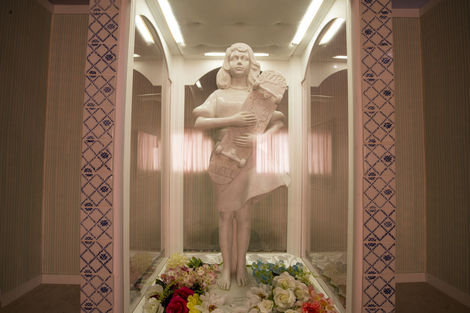
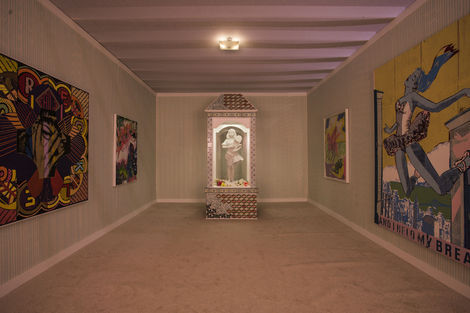
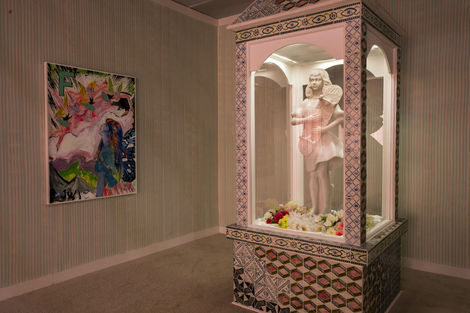
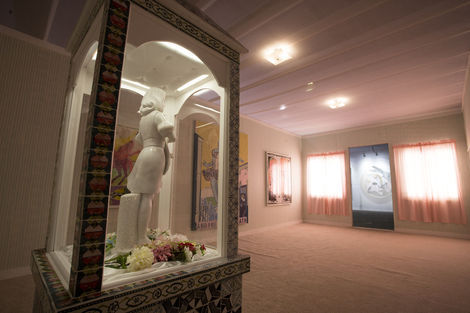
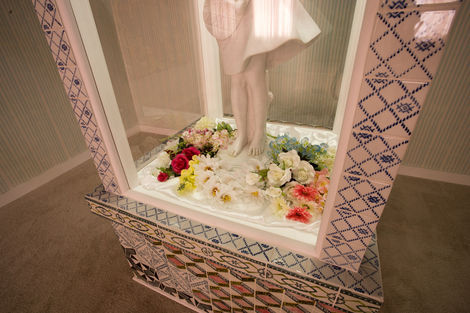
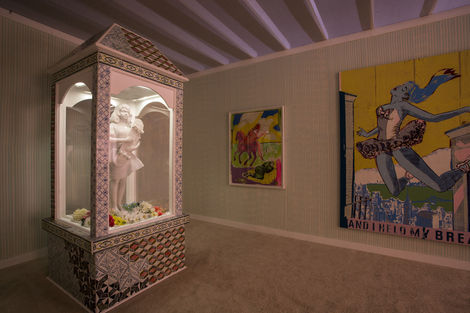
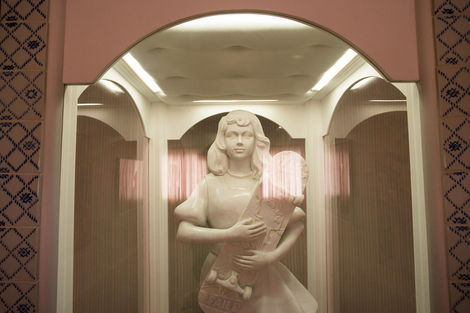
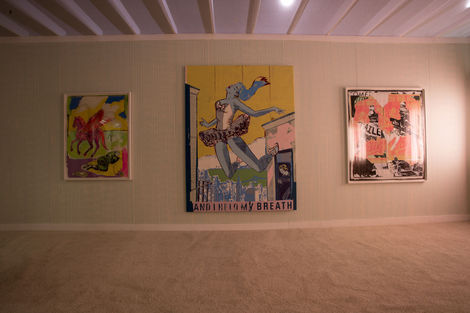
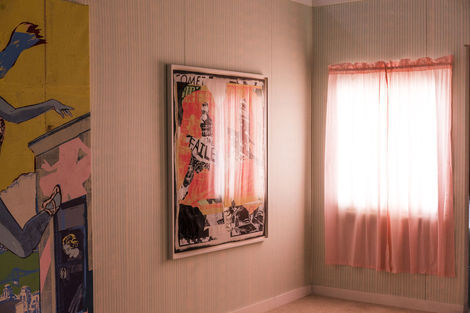

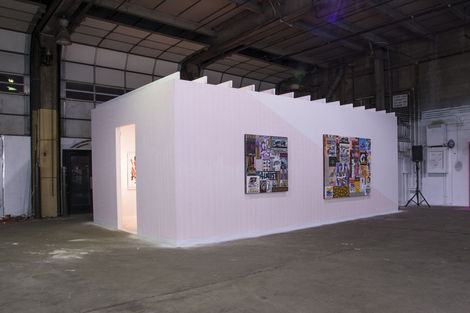











For much of the past century, contemporary art has sought to be a place of social critique. But this approach also has its counterpoint, in an equally strong tendency—from Picasso to the surrealists or the neo-Romantics—to use art as a vehicle to draw new life into the everyday. Such art seeks to quell the banality and longing we feel in the disenchanted spaces of modern life, from the urban high-rise to the miles of undifferentiated sprawl that marks the American west.
Our work has long sought to draw together global forms of everyday veneration, from prayer wheels to temples. These icons and sculptural projects blend the traditional with more contemporary visual culture in order to engage our audience, juxtaposing sites of play and profundity. Shrine (2016) considers the familiar vernacular form of the roadside shrine, and sites it in a place of particular mnemonic weight—the post-war bedrooms of our suburban youth. This new installation recalls those rooms as places of longing, desire, projection, and improvisation. Taken together, Shrine creates a place of memory and communion, meditating on shared histories and unforeseen futures. After all, we spent our youth surrounded by carpeted floors, plastic plants, and nondescript furniture; but we knew a world of potential awaited outside, if we only had a way to get there.